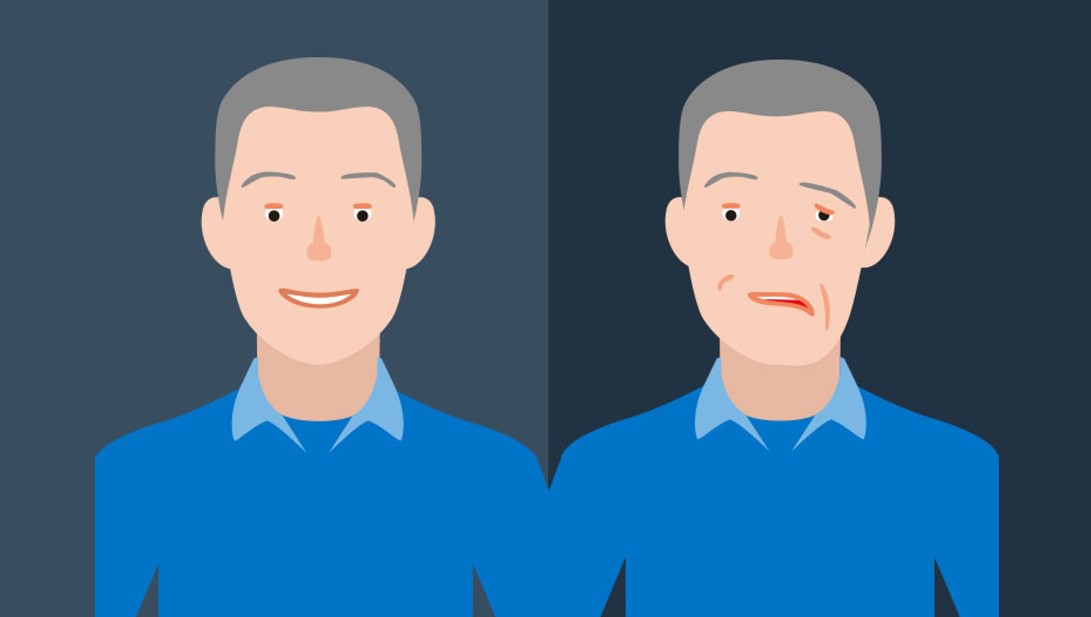
Causes and treatment of facial nerve paralysis
Suddenly one morning he woke up and saw that your face was bent to one side! Water is rolling down the lips when doing coolie, you can't close your eyes! What a terrible feeling then, right? Many people don't know what causes facial nerve paralysis or sudden twisting of the face! Let's know some facts about this disease today.
Facial nerve paralysis

It is a kind of paralysis. Our seventh cranial nerve is known as the facial nerve. When it becomes partially or completely paralyzed, it is called facial paralysis or facial nerve paralysis. A gentleman named John Bell first discovered this disease, hence it is also called Bell's Paralysis.
Is it completely curable?
In this case, the facial muscles become weak or paralyzed on one side. It is caused by damage to the nerves that connect the facial muscles. However, these muscles are only temporarily affected and with regular treatment, the disease is usually completely cured. Facial paralysis usually begins to improve within two to three weeks. Contingent upon how gravely the nerve is harmed.
Who suffers more?
It can affect women and men of any age, but the disease is more common in women than in men. Also, during pregnancy, lung infection, diabetes and family history of this disease increase the chances of facial paralysis.
Causes facial nerve paralysis
- Viral infection
- Middle ear infection
- Cold cause
- Traumatic and cerebral stroke causes
- Facial tumor
- Facial nerve injury after ear surgery etc.
What are the symptoms?
The face of a patient with this disease is usually curved to one side. However, in one percent of patients, both sides of the mouth are affected. On the affected side of the patient's face, the eye on the other side does not close, and the eyes water. Sometimes it is difficult to open the eyes completely. The patient cannot fold the forehead. There are also some symptoms, know about them.
- May cause eye irritation
- Many times, a 'dry eye' problem occurs
- When the porter goes, the water falls down
- Cheek muscles may sag
- Difficulty chewing and swallowing food
- The smile on the face bends
- Drooling started
- The tongue becomes dry
- The sense of taste at the front of the tongue may also be reduced
- Pain in the affected side of the mouth
- Especially jaw and head pain
- Sometimes it is difficult to speak
Diagnosis

A specialist doctor can diagnose the disease by clinical examination and taking the patient's history, but sometimes some pathological and radiological tests are required.
Treatment

Its treatment relies upon the reason for the sickness. Medicines are given depending on the cause of the facial paralysis. But in all cases, physiotherapy is the main treatment along with medicine. If physiotherapy treatment is started within 72 hours of facial paralysis, the patient is likely to recover faster. Steroid medicine is usually used for this disease. Eye drops are prescribed to prevent 'dry eye'. Also, if the eyes are not completely closed, it is recommended to close the eyes with surgical tape while sleeping.
Physiotherapy

In the case of physiotherapy treatment, physiotherapists plan different types of treatment according to the patient's condition. It includes facial muscle exercises, speech re-education, ballooning exercises, and electrotherapy. Many times, after hospitalization, taking physiotherapy 2-3 times a day can help you recover quickly. If the nerve is more damaged, it takes three to six months for the patient to recover.
Home treatment

- Facial massage will increase blood circulation.
- To reduce eye irritation and pain, a soft towel soaked in warm water can be applied to the eyes.
- Take a little water in a glass and make bubbles in it with a straw. It will strengthen the muscles around the lips and drinking water will not fall down the cheeks.
- Speak, this will reduce the inertia of speaking. If you have trouble pronouncing a word, first pronounce the vowels out loud. Then practice the consonants.
- Try to stay relaxed. Breathing exercises and yoga will help you relax.
- Do the exercises taught by the physiotherapist regularly.
- Get regular 8 hours of sleep, a healthy diet, and drink plenty of water. In these cases, a healthy lifestyle helps in recovery.
Conclusion
Facial nerve loss of motion or unexpected contorting of the face can have different causes, including viral diseases, growths, injury, and hereditary elements. The treatment of facial nerve loss of motion relies upon the fundamental reason, however, may include prescriptions, exercise-based recuperation, and medical procedure. At times, the condition might determine all alone with next to no intercession. It is essential to look for clinical consideration instantly if you experience any unexpected or unexplained facial shortcomings or jerking, as early determination and treatment can further develop results.
Read More Articles
Instagram Twitter Facebook LinkedIn Quora Google News
Our Other Engagements:


https://livewithgreen.com/facial-nerve-paralysis-treatment/
.jpg)